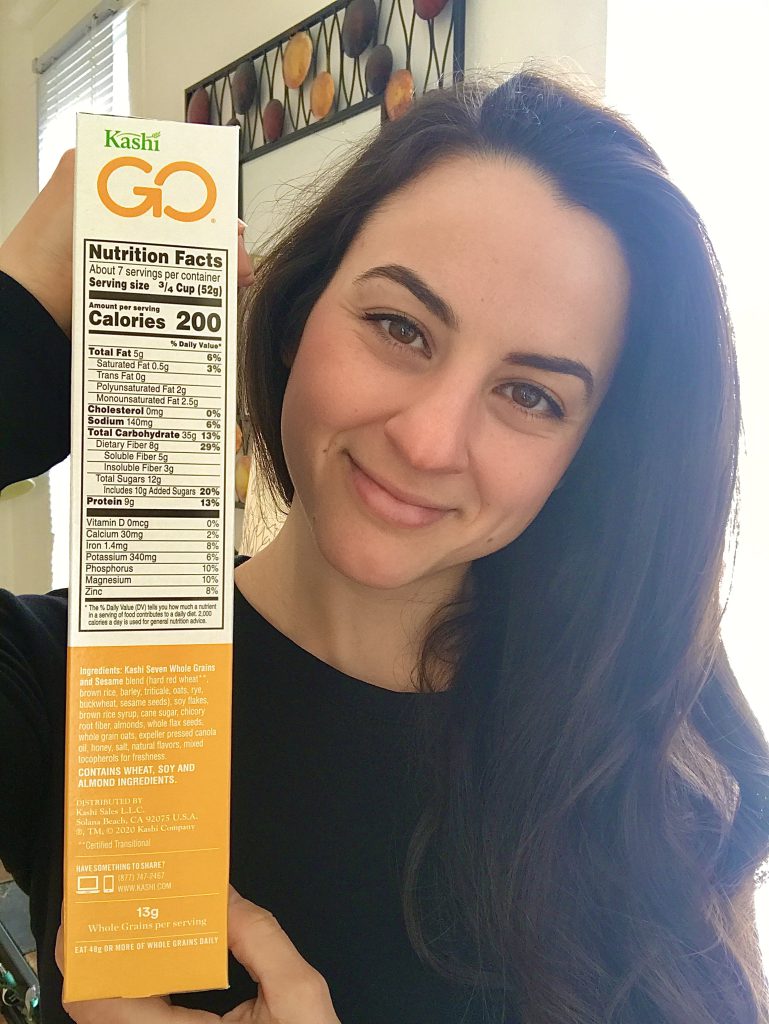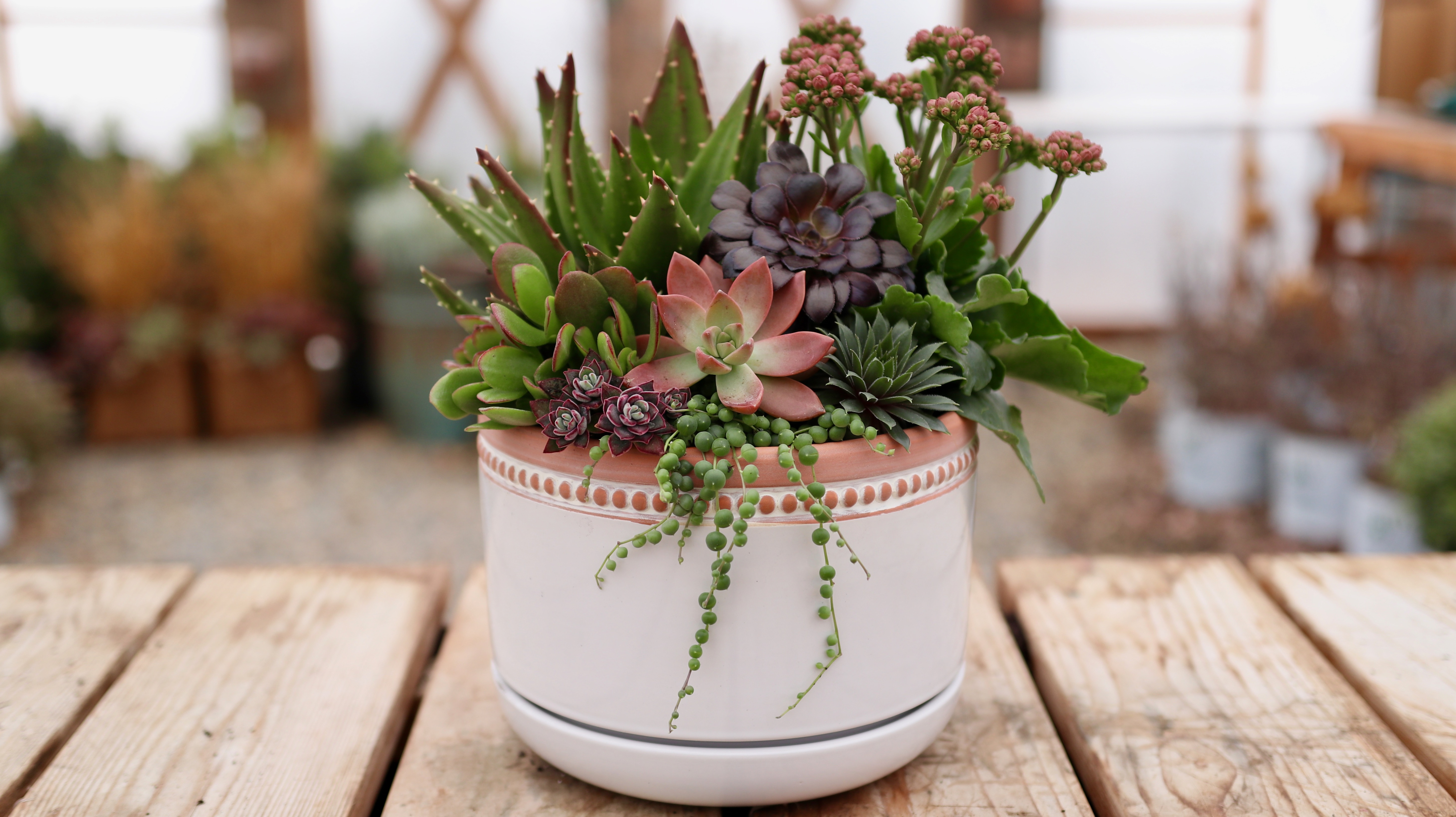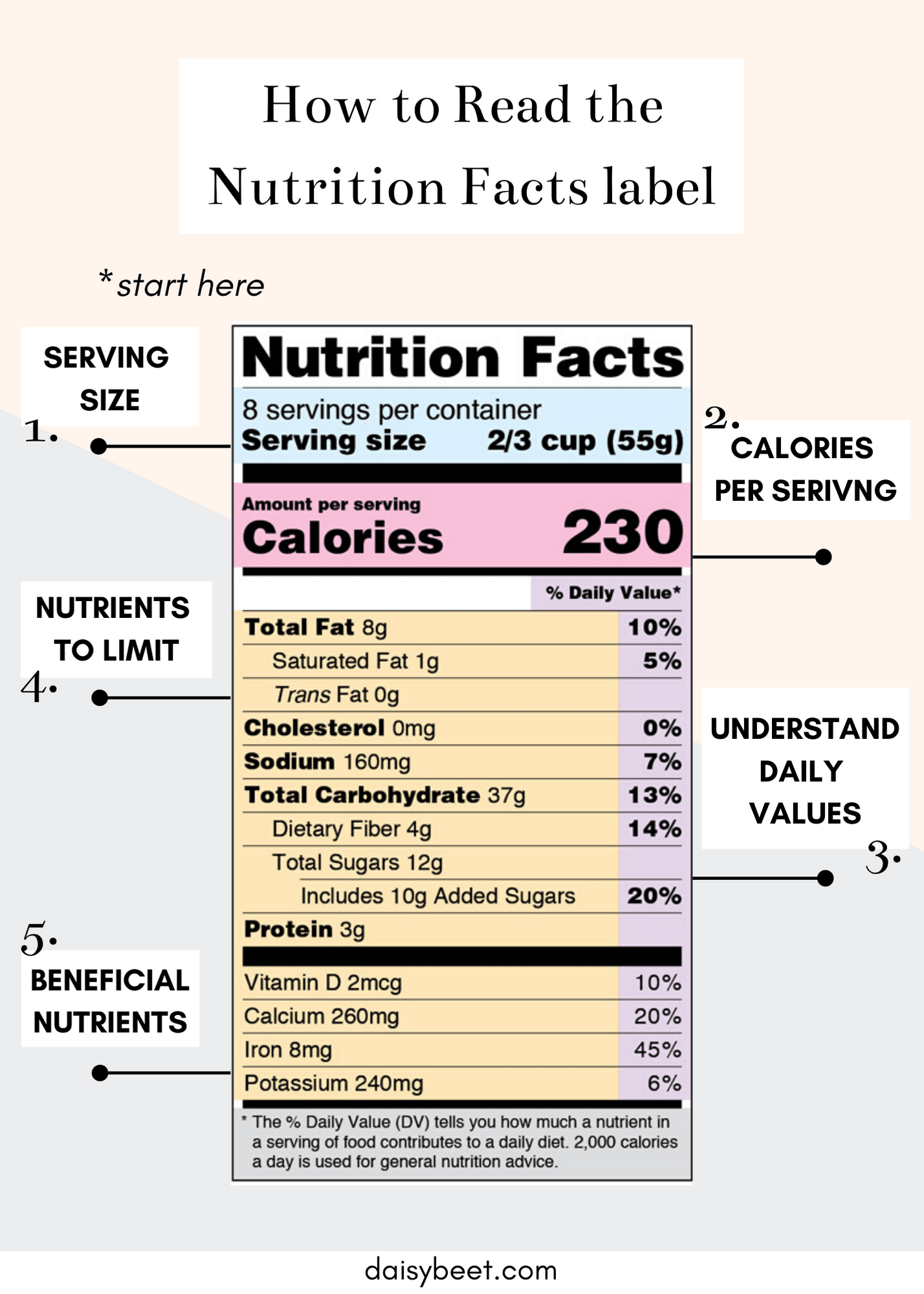44 reading nutrition fact labels
How to Easily Read Nutrition Facts Labels | Underscore_ Sodium. Sodium (listed in milligrams) is necessary for keeping proper body fluid balance. The total Sodium shown on Nutrition Facts labels includes the Sodium from salt, plus Sodium from naturally occurring ingredients. The American Heart Association recommends no more than 2,300 mg of Sodium (about 1 tsp of salt) per day. PDF TO CARE 4 YOURSELF READING A NUTRITION FACTS LABEL - novoMEDLINK Potassium300mg 9% Protein 6g Total Carbohydrate18g Saturated Fat 0g Dietary Fiber 6g Vitamin A 0% Calcium 4% Folic Acid 0% Sugars 1g Trans Fat 0g Polyunsaturated Fat 0.5g Monounsaturated Fat 0.5g Vitamin C 0% Start here What you eat is important. But so is how much you eat. So start by looking here.
The Nutrition Facts Label - Food and Drug Administration 4 servings per container 8% Trans % Daily Value* food is considered a Total Fat 4g Saturated Fat 1.5g Fat 0g Cholesterol 5mg Sodium 430mg Total Carbohydrate 46g Dietary Fiber 7g Total Sugars 4g...

Reading nutrition fact labels
3 Ways to Read Nutrition Facts on Food Labels - wikiHow When a label lists percentages for fat, cholesterol, sodium, or protein, they're referring to the percentage in a single individual serving. So if a jar of salsa has 10% of your daily serving of sodium but there are 20 servings in the jar, then the entire jar contains 200% of your daily recommended sodium intake. [2] 3 How To Read Food and Beverage Labels - National Institute on Aging How to read the Nutrition Facts label The U.S. Food and Drug Administration (FDA) requires a Nutrition Facts label on most packaged foods and beverages. At the top of the Nutrition Facts label, you will find the total number of servings in the container and the food or beverage's serving size. PDF MOVE! Nutrition Handout N10: How to Read a Nutrition Facts Label size" is the official term used on food labels. Nutrition facts given on the food label are based on one serving. Be sure to look at the number of servings in the container. Even small containers may have more than one serving. If you eat the whole container, then you must multiply the nutrition values by the number of servings in the ...
Reading nutrition fact labels. How to Use the Nutrition Fact Label, Eat Right, NHLBI, NIH Get enough of these: potassium, fiber, vitamins A and C, calcium, and iron Use the Percent Daily Value (% DV) column when possible; 5% DV or less is low, 20% DV or more is high Visit the Smart Food Shopping page and learn how the label can help you choose foods lower in calories, fat, and added sugar to help maintain a healthy weight. How to Read Everything on the Nutrition Facts Label - Food Network This carries over to all the other nutrients on the label. If 1 serving of a food has 120 mg of sodium, it can technically be labeled as a "low sodium" food. However, if you eat 3 servings, triple... Reading Nutrition Facts Labels | Zuckerman Family Center for Prevention ... If you eat both servings then you'll actually eat 500 calories. Look at the percent daily value. As a guideline, a % daily value about 20% is high and below 5% is considered low. So this product is high is Calcium and Sodium, but low in Iron, Fiber and Vitamins A and C. Look out for saturated fat, trans fat, sodium and cholesterol. Food Labels | CDC - Centers for Disease Control and Prevention Understanding the Nutrition Facts label on food items can help you make healthier choices. The label breaks down the amount of calories, carbs, fat, fiber, protein, and vitamins per serving of the food, making it easier to compare the nutrition of similar products. Be sure to look at different brands of the same foods—nutrition information ...
The Nutrition Facts Label: Look for It and Use It! | SNAP-Ed Read the Label includes lots of tips and challenges created especially for you! These printable activities help you learn more about servings, calories, and nutrients. So, get started today. You'll learn a lot and have fun when you Read the Label! Website Nutrition Facts Label (PDF,566 KB) Funding Source Food and Drug Administration Free Material The Basics of the Nutrition Facts Label - Academy of Nutrition and ... The following is a quick guide to reading the Nutrition Facts label. Step 1: Start with the Serving Size Look here for both the serving size (the amount people typically eat at one time) and the number of servings in the package. Compare your portion size (the amount you actually eat) to the serving size listed on the panel. Quick Tips for Reading the Nutrition Facts Label - Food and Drug ... Quick Tips for Reading the Nutrition Facts Label Use Percent Daily Value (%DV) as a guide. The %DV shows how much a nutrient in a serving of the food contributes to a total daily diet. As a general... Nutrition Facts Label Guide | NHLBI, NIH Web-only. Learn more about web-only publications. Food labels can help you make healthier choices. Here's information on how read labels on food packaging to help you make quick, informed decisions about the what foods to choose. Keywords: DASH, High Blood Pressure, Heart-Healthy Living.
How to read nutrition facts on food labels? What are the three rules of nutrition label reading? Look for the three most unwanted nutrients on the product label first. Saturated fat, added sugar, and sodium are the three (salt). Then check for protein, dietary fiber, and unsaturated fat, which are the three most desirable nutrients. Next post: How to prepare pureed food for elderly? How to Read the Nutrition Facts Label - greaterbostonurology.com ELLE: The nutrition facts label lists macronutrients (carbohydrate, fat, and protein) and fiber content of foods, as well as some micronutrients (vitamins and minerals). Knowing how to interpret this information can be very beneficial for your health. Perfect segue! Let's talk about the percentages we see for macronutrients and micronutrients. The New Nutrition Facts Label | FDA Visit the Interactive Nutrition Facts Label to explore the label, from top to bottom. This tool provides a detailed look at all the information listed on the Nutrition Facts label, helpful tips for... Reading Food Labels | ADA - American Diabetes Association The Nutrition Facts labels on foods are really the key to making the best choices. We'll cover the basics so that these labels make shopping easier for you. You've heard it all. From carb-free to low-carb, to whole and empty carbs, it's hard to know what it all means. Blood sugar highs and lows aren't always easy to understand.
How to read the - tuj.implanty-michno.pl How to read the Nutrition Facts label The U.S. Food and Drug Administration (FDA) requires a Nutrition Facts label on most packaged foods and beverages. At the top of the Nutrition Facts label, you will find the total number of servings in the container and the food or beverage's serving size. Tips for how to read nutrition labels.The absence of unhealthy things doesn't necessarily indicate ...
How to Read a Nutrition Facts Label - The Family Meal Project How to Read a Nutrition Facts Label 1. Look at the serving size: Look at the serving size and the number of servings per package Compare your typical portion size to the one listed on the nutrition facts label For instance, if the serving size is 1 cup and you typically have 2 cups, that indicates you are consuming twice the calories and nutrients
Read the Label Youth Outreach Materials | FDA Read the Label Youth Outreach materials challenge kids (ages 9 to 13) to look for and use the Nutrition Facts label on food and beverage packages. The materials include fun, easy tips and targeted...
How to Read Nutrition Facts Label | Jenny Craig This section on the nutrition facts label shows you how many total carbs (which include fiber, sugar and added sugar) are in a product. Dietary Fiber: Adults should aim to consume 25-30 grams of fiber daily. 9. Many adults don't eat enough fiber. So check for products that contain this nutrient.
How to Read Nutrition Facts Labels - Action for Healthy Kids Choosing foods that have smaller percentage Daily Value for saturated fat, added sugars and sodium. A small percentage or low amount of a specific nutrient is considered 5% DV or less. Choosing foods that have higher percentage Daily Value for vitamins, minerals and fiber. A higher percentage of a specific nutrient is considered 20% DV or more.
Reading Nutrition Facts Labels - EFNEP - Expanded Food and Nutrition ... Percent Daily Values (%DV) tell you how much of a certain nutrient you will get from the product. If the label says "10% Total Fat," this means one serving of the food is 10% of all the fat you should be eating each day. However, Daily Values (DV) are based on a 2,000 calorie per day diet. You may need more or less than 2,000 calories per day.
Making the Most of the Nutrition Facts Label Infographic The Nutrition Facts label can help you make healthier choices. Use it! Here's what to look for: Start with serving information. This will tell you the size of a single serving and how many servings are in the package. Check total calories. Do the math to know how many calories you're really getting if you eat the whole package.
Food label reading guide | Nutrition Australia What to look for when reading food and drink labels (per 100g) Health Star Ratings The Health Star Rating is a front of pack labelling scheme which can be used to make healthier food choices at a glance. The rating range is from ½ - 5 stars and the more stars, the healthier the choice. Recommended minimum star ratings for food and drink categories
How to Read the Nutrition Facts Label | Ohioline In Figure 1, the serving size listed is 2/3 cup and there are 230 calories per serving (2/3 cup) of the food. If a person only ate half a serving of the food (1/3 cup), they would only get half the calories and other nutrients listed on the label. If a person ate two servings of the food (1⅓ cup), they would get twice the calories and other ...
Understanding Food Nutrition Labels | American Heart Association Make sure you get enough of the nutrients your body needs, such as: calcium, choline, dietary fiber, iron, magnesium, potassium, and vitamins A, C, D and E.* 5 - Understand % Daily Value. The % Daily Value (DV) tells you the percentage of each nutrient in a single serving, in terms of the daily recommended amount.
Learn How the Nutrition Facts Label Can Help You Improve Your Health Read the Nutrition Facts labels on your packaged food and drinks to keep track of sugars, fats, protein, and other nutrients. Most sodium we consume is from salt, and salt is commonly in processed foods. Read labels and choose the product with less sodium. Drink plain water instead of sugary beverages.
How to Understand and Use the Nutrition Facts Label | FDA When looking at the Nutrition Facts label, first take a look at the number of servings in the package (servings per container) and the serving size. Serving sizes are standardized to make it easier...
PDF MOVE! Nutrition Handout N10: How to Read a Nutrition Facts Label size" is the official term used on food labels. Nutrition facts given on the food label are based on one serving. Be sure to look at the number of servings in the container. Even small containers may have more than one serving. If you eat the whole container, then you must multiply the nutrition values by the number of servings in the ...
How To Read Food and Beverage Labels - National Institute on Aging How to read the Nutrition Facts label The U.S. Food and Drug Administration (FDA) requires a Nutrition Facts label on most packaged foods and beverages. At the top of the Nutrition Facts label, you will find the total number of servings in the container and the food or beverage's serving size.
3 Ways to Read Nutrition Facts on Food Labels - wikiHow When a label lists percentages for fat, cholesterol, sodium, or protein, they're referring to the percentage in a single individual serving. So if a jar of salsa has 10% of your daily serving of sodium but there are 20 servings in the jar, then the entire jar contains 200% of your daily recommended sodium intake. [2] 3













Post a Comment for "44 reading nutrition fact labels"